Harnessing Unique Supply and New Audiences: Marketplaces Unleashed Part 2
Exploring the first two pillars of our marketplaces framework through case studies
Harnessing Unique Supply and New Audiences: Marketplaces Unleashed Part 2
Exploring the first two pillars of our marketplaces framework through case studies
This is the second in our three-part Marketplaces Series, where we explore the dynamics and strategies that drive successful platform businesses with insights we've gleaned from observing a variety of successful platforms, both from our own portfolio and beyond.
If you missed part 1, you can check out Marketplaces Unleashed: Fuelling India’s $200B Consumer Spending Surge which examined the current online consumer marketplaces landscape and explored the drivers behind the remarkable surge in India’s online spending.
In February 2023, Wall Street observers opened their dailies to a remarkable announcement: "Airbnb posts a record $1.9 billion in profits." Scrolling back 15 years to 2008, Brian Chesky embarked on a remarkable journey that would forever change the landscape of the accommodation industry and marketplaces as we understand them today. It all began with a simple idea: subletting his third bedroom to a handful of conference attendees, a creative solution to offset his exorbitant monthly rent of $1,150 in San Francisco. His friend and now co-founder, Joe, had three air mattresses that they could share, while Brian arranged for breakfasts. Thus, 'Air Bed and Breakfast' or Airbnb was born.
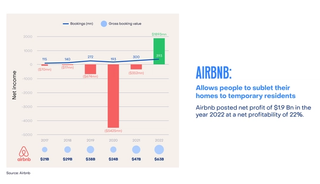
A simple yet unique solution, Airbnb addressed a genuine need that consumers couldn't access at scale before.
By allowing individuals to rent out their spare rooms, apartments, or even entire homes, Airbnb created a vast supply of unique and varied options for travelers.
Airbnb's offerings in various geographies encompassed a wide spectrum of prices, ranging from modest rooms with basic amenities to luxurious private villas situated near scenic destinations. This unprecedented range of options revolutionized travel, making it accessible to leisure backpackers and even destination hunters - target groups not catered to by the incumbents.
Airbnb's success can be attributed to the convergence of unique supply and the identification of new target groups (TGs), the first two elements of the foundational axes in the framework introduced in our previous edition. In this article, we will delve deep into these elements, understanding their nuances and how marketplaces can leverage them to create large outcomes.

Marketplaces With Unique Supply Unlocks Have Created Large Outcomes
To have a unique supply is to house products or services on the marketplace that other platforms do not have access to yet. Think AliExpress opening up availability of products manufactured in China in the early 2010s, or OLX giving access to a wide library of pre-used products that were earlier not discoverable. These are a few classic examples of marketplaces being built on unique supply as an axis.
Gaining a thorough understanding of consumers' needs and pain points from the ground up often serves as a valuable indicator for identifying such opportunities. Unique supply can serve as a powerful differentiating factor, enabling companies to enter the market with a solid advantage over established players. However, we have also observed cases where companies have strategically leveraged this element during their journey to strengthen their existing pipeline of offerings.
Closer to home, we can see this play out in detail in two companies that have become fairly synonymous with their respective categories - Nykaa and Urban Company.
Nykaa

The Indian beauty landscape was at an inflection point in 2013. Falguni Nayar was wanting to return home from London and start a company of her own and be a part of a legacy after having taken multiple companies public as an Investment Banker at Kotak Mahindra. After vying over multiple ideas, she identified an opportunity in the category of beauty. According to Falguni Nayar, beauty for Indian women meant only two products: red lipstick and black kajal. The vast majority of the consumers were unexposed to products outside of these basics and there was a lack of awareness to the swathe of products that was available to her in London. A growing generation of internet first audience wanted to get their hands at these products but could not purchase from the incumbent horizontals for they were laden with counterfeit products.
She realized that if she could introduce Indian women to this new realm of beauty and educate them on their use cases, it would unlock a successful venture. Thus, Nykaa was born.
Over countless iterations, Nykaa perfected its value propositions for customers and curation was its silver bullet. Nykaa partnered with international brands like Esteè Lauder that had not set foot in India yet through Amazon and Flipkart in an inventory-led model. This operating model allowed Nykaa to establish the initial trust with the brands, since it bore the risk of the inventory, and trust with the customers who now have access to these brands and know that the products shipped are legitimate. This created differentiation in its early days and is an approach Nykaa has kept alive even to this day, by launching new brands such as Kay Beauty, exclusively on its platform - taking it to the 30% market share it holds today within the space.
Urban Company
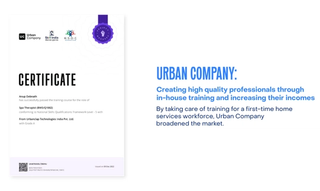
At Elevation Capital, we have been fortunate to witness the birth of this unicorn and have followed its journey from the ringside since its inception. Local services have always been a large opportunity with mediocre customer experience and therefore in dire need of a platform such as Urban Company. Global equivalents have largely addressed this issue as a classifieds model, but there is a catch - there was a natural limit to the number of service professionals that one could bring to the platform in a particular geography. This can either be through access constraints or due to the lack of talent.
To keep their growth going and make supply ever stronger, Urban Company had invested in the training of new service professionals, bringing alive a supply that did not previously exist.
This turned out to be a win-win proposition, as these professionals in their previous avatar had largely gotten meager wages of Rs 10,000 a month and could now be a part of an organized community of service professionals, earning in multiples of the earlier values.
We have covered the complete journey of our partnership with Urban Company on this page.
Addressing A New Target Group Or Unique Behaviour Can Give Rise To Disruptor Companies
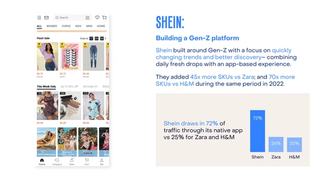
Multiple marketplaces have tapped into a new target audience that previously seemed underserved by incumbents. Their interest could be better addressed by building differentiated supply, product features, and experience that is geared towards the core behavior of this audience. In this section, we will dive deeper into the marketplace that dethroned Amazon as the most downloaded shopping app in the United States - Shein. Building around the apparel shopping needs of Gen-Z, Shein innovated across pillars of supply as well as user experience to rise to prominence in the US market.
Shein started out in China as a destination that sold wedding dresses in 2008. But the company found little success and pivoted multiple times in 5 years - from trying their hands on jewelry, shoes, and even cosmetics. Over these iterations, they noticed a constant demand pattern from one target group - women in their early 20s. Singularly narrowing down on this segment, they realized they were sitting on a massive opportunity that was not addressed clearly by the likes of offline and online retailers.
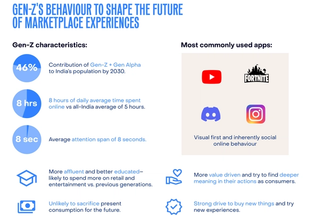
Firstly, this segment wanted newer choices on a frequent basis, and the choice of purchase was largely inspired by pop culture. The user retention stats on glances was a clear indicator for the team to narrow down this axis. Further, these young shoppers wanted products that are pocket friendly and did not mind swapping out clothes often.
Armed with these insights, Shein invested in creating an ultra-fast supply chain that can turn from design to production in just 3 to 7 days - hinged on a system that can predict the future trends in fashion and churn at a velocity of over 45 times what Zara is able to release.
Understanding where their audience spent time largely, Shein used Instagram and Tiktok based influencers and incentivized the customers with discount codes on their already cheaper offering.
Shein's Tiktok strategy went viral during the Covid-19 lockdowns, positioning Shein as the de facto market leader in fast fashion - with their sales rising by triple digits.
In fact, Shein was among the first retailers to use Instagram influencers for marketing from as early as 2011.
Conclusion
Having studied these cases, it is clear how powerful these wedges are in creating large outcomes for marketplaces. In many places, one can notice how both these axes co-exist, and that stems from the clear understanding of the founders into the deep pain points of their target group. The real magic happens when more than one axis caramelizes. If you are building in this space, feel free to reach out to anand@elevationcapital.com and manish@elevationcapital.com to share your ideas.
Written by Amit Aggarwal, Manish Advani
Related
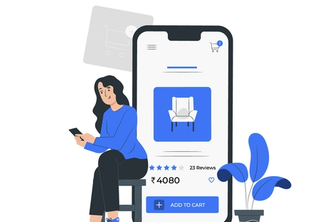
Harnessing Better Experience And Innovative GTM: Marketplaces Unleashed Part 3
Exploring the last two pillars of our marketplaces framework through case studies
03.08.2023

The State of GenAI in Consumer Applications
The State of GenAI in Consumer Applications
24.07.2024

Our New Fund: All In on India
Elevation Capital announces Fund VIII of $670 million, to accelerate partnering with category defining early stage companies in India
07.04.2022